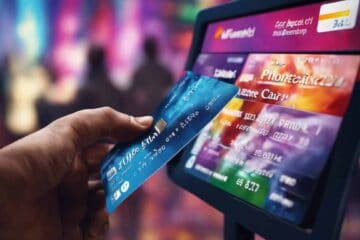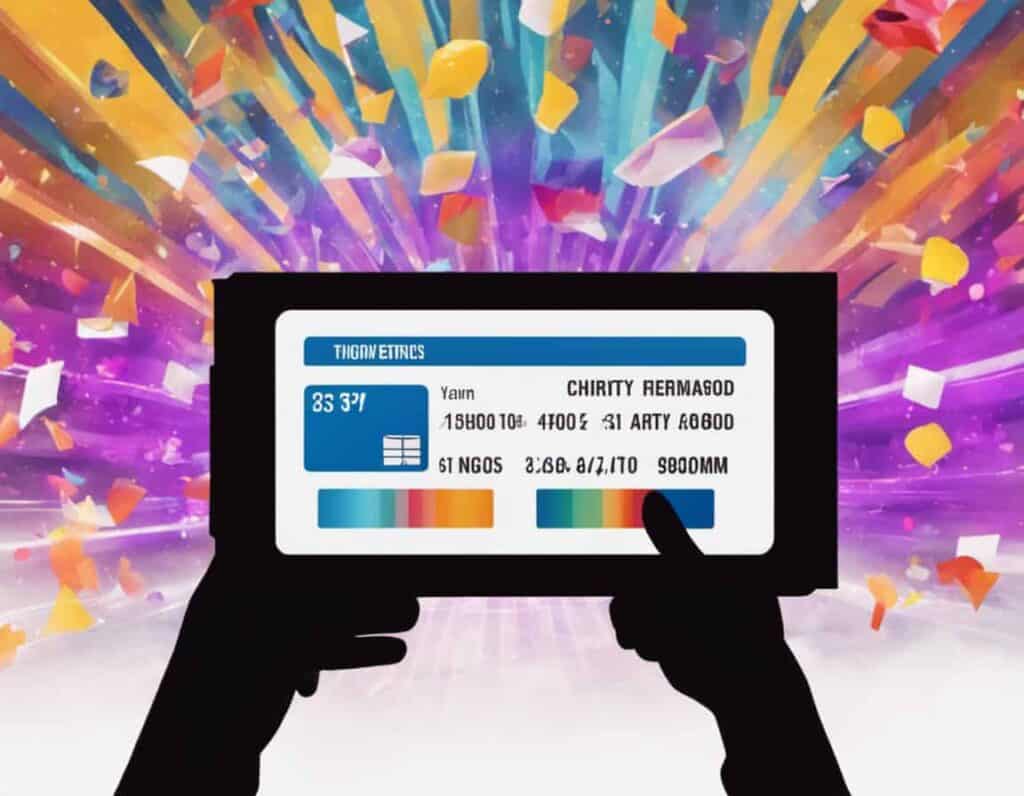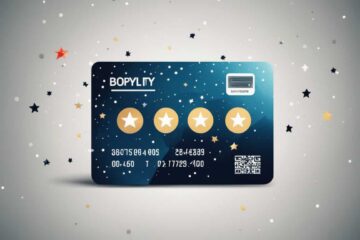In an era where digital innovation is reshaping every facet of business, the field of door-to-door sales is undergoing a significant transformation.
This comprehensive guide is tailored for field representatives, leaders, managers, and teams eager to navigate this evolving landscape. Here, we delve into how digital tools are revolutionizing traditional door-to-door sales strategies, offering insights and practical advice to enhance your overall performance.
Transforming Door-to-Door Sales in the Digital Age
In the dynamic sales world, how has the digital age transformed door-to-door strategies?
There was a time when the success of door-to-door sales was predominantly hinged on the personal charisma of the sales people and the physical materials they carried, like brochures.
These elements, while still relevant, are no longer the sole drivers of success. The digital era has ushered in innovative tools and approaches, fundamentally altering the way people interact with potential customers.
Digital technology has transcended its role from merely facilitating to actively transforming strategies.
Consider CRM (Customer Relationship Management) systems, data analytics, and digital marketing tools. These are not just add-ons to the process but are pivotal elements that redefine how sales reps identify, engage, and ultimately win over potential clients.
The adoption of these digital tools translates into tangible benefits. Sales reps equipped with the right digital tools can plan their routes more efficiently, saving time and energy. They can also identify the most promising leads and tailor their pitches to align precisely with the specific needs and preferences of each client.
But beyond these operational improvements, what does the actual data reveal about the impact on performance and efficiency?
Studies and real-world data consistently demonstrate that sales people leveraging digital tools experience significant improvements in key performance metrics. These include higher conversion rates, increased customer engagement, and more efficient use of time and resources.
The data not only validates the effectiveness of digital tools in enhancing performance but also highlights their indispensable role in the modern sales landscape.
The digital transformation of door-to-door sales is a total overhaul, not just a shift. By embracing and effectively utilizing digital tools, sales reps are not only keeping up with the times but are also positioning themselves at the forefront of a more efficient, targeted, and successful sales era.
Essential Digital Tools for Modern Sales Reps
In the dynamic world of field sales, staying ahead of the curve means embracing the power of digital technology. From CRM systems to cutting-edge field sales management software, the right tools can make all the difference.
Let’s explore some of the essential digital tools that are reshaping the landscape of modern sales, ensuring reps are equipped with everything they need to excel in today’s competitive market.
1. CRM Systems – The Backbone of Customer Management
Customer Relationship Management (CRM) systems are software solutions designed to manage all aspects of a business’s interactions with current and potential clients.
They function as centralized databases, storing detailed information on audiences and prospects.
a. Contact Management
CRM systems offer robust contact management capabilities, allowing sales people to track every interaction with customers, from initial contact to post-transaction follow-ups. This feature is crucial in building and maintaining strong customer relationships.
b. Sales Pipeline Management
These systems provide an overview of the sales pipeline, enabling reps to monitor the progress of deals at various stages. It helps in identifying bottlenecks and optimizing the process for better efficiency.
c. Lead Management
Effective lead management tools within CRM systems help in tracking and nurturing leads until they are ready for conversion, ensuring no potential falls through the cracks.
d. Analytics and Reporting
CRMs come with powerful analytics tools that offer insights into trends, customer behavior, and team performance, enabling data-driven decision-making.
e. Integration Capabilities
Modern CRMs can integrate with various other tools and platforms, enhancing their functionality and providing a more seamless experience for sales people and customers alike.
CRM systems often employ advanced algorithms and machine learning technologies to analyze data, predict customer behavior, and provide actionable insights.
This helps in personalizing client interactions and optimizing strategies.
With a plethora of CRM systems available, choosing the right one can significantly impact your sales effectiveness.
- Salesforce
- HubSpot CRM
- Zoho CRM
- Microsoft Dynamics 365
- Oracle NetSuite CRM
- Pipedrive
- Freshsales
CRM systems are vital in the modern sales landscape, offering unparalleled insights into customer needs and behaviors. They facilitate personalized customer interactions and streamline processes, driving efficiency and success.
Embracing a CRM system that aligns with your business needs can revolutionize your approach, turning every customer interaction into an opportunity for growth.
2. Field Sales Management Software – Optimizing Sales Efficiency
Field Sales Management Software is a specialized tool designed to enhance the efficiency and effectiveness of field teams.
It automates various aspects of field sales activities, from scheduling to performance tracking.
a. Territory Management
This software enables effective management of territories, ensuring optimal allocation of resources and personnel. It helps in identifying high-potential areas and aligns efforts accordingly.
b. Real-Time Data Access
Real-time data access empowers field reps for on-the-go informed decisions, crucial for adapting to market changes and customer needs.
c. Performance Monitoring and Analytics
The software offers detailed analytics on individual and team performance, providing insights into areas of strength and opportunities for improvement.
d. Route Optimization
By utilizing GPS and mapping technologies, the software optimizes travel routes for reps, saving time and reducing operational costs.
e. Task Automation
Routine tasks such as data entry and report generation are automated, freeing up sales reps to focus on selling and relationship building.
Leveraging GPS technology and advanced algorithms, this software provides optimized routing solutions and predictive analytics, enhancing the productivity of field teams.
Among the various options available, some field sales management software stands out for their robust features and user-friendly interface.
- Beest.app
- Salesforce Field Service
- Skynamo
- Repsly
- Badger Maps
- Spotio
- MapAnything
Field Sales Management Software plays a crucial role in streamlining field operations, ensuring reps can maximize their time and efforts on productive activities.
Implementing the right field sales management software can be a game-changer, providing teams with the tools they need to excel in a highly competitive environment.
3. Data Analytics and Targeted Marketing
Data Analytics and Targeted Marketing tools are digital solutions that analyze large sets of data to identify market trends, customer preferences, and potential opportunities.
They allow sales reps to focus their efforts on the most promising leads and markets.
a. Market Segmentation
These tools segment the market based on various criteria, enabling reps to target specific groups with tailored marketing strategies.
b. Predictive Analytics
By analyzing past sales data and market trends, these tools predict future opportunities and customer behaviors, guiding strategic planning.
c. Customer Insights
Detailed customer insights are provided, helping reps understand the needs, preferences, and buying patterns of their target audience.
d. Campaign Optimization
The tools offer capabilities to optimize marketing campaigns in real-time, ensuring maximum impact and ROI.
e. Performance Tracking
Track the effectiveness of marketing campaigns and sales efforts, providing valuable feedback for continuous improvement.
Utilizing machine learning and predictive analytics, these tools sift through vast amounts of data to uncover actionable insights and inform targeted marketing strategies.
Numerous data analytics and targeted marketing tools are available, each offering unique features to enhance strategies.
- Google Analytics
- Tableau
- HubSpot Marketing Hub
- Marketo
- Adobe Analytics
- IBM Watson Marketing
- Salesforce Marketing Cloud
These tools are crucial in modern sales, empowering reps to use data for effective tailored approaches.
Integrating data analytics and targeted marketing into your strategy can improve decisions, customer engagement, and sales results.
4. Mobile and Cloud-based Technologies
Mobile and cloud-based technologies refer to software and applications that are accessible on mobile devices and stored on remote servers (cloud), offering flexibility and scalability to reps in the field.
a. Accessibility and Mobility
These technologies provide sales reps with the ability to access critical information and tools from anywhere, enhancing their mobility and responsiveness.
b. Scalability and Customization
Cloud-based solutions offer scalable storage and customizable features that adapt to the growing needs of field teams.
c. Real-Time Collaboration
Facilitate real-time collaboration among team members, ensuring efficient communication and teamwork, regardless of location.
d. Data Security and Backup
With advanced security protocols and automatic data backup, these technologies ensure the safety and integrity of critical sales data.
e. Integration with Other Tools
Seamless integration with other sales and business tools enhances the overall functionality and efficiency of the sales process.
These technologies leverage cloud computing and mobile platforms to provide secure, scalable, and accessible solutions that are integral to modern sales operations.
The market offers a variety of mobile and cloud-based tools, each designed to cater to the unique needs of field reps.
- Dropbox
- Google Drive
- Salesforce Mobile
- Microsoft OneDrive
- Slack
- Trello
- Asana
In an agile world, mobile and cloud tech keep field reps connected and efficient. Embracing these tools boosts your ability to meet customer needs and stay competitive in sales.
5. Social Media and Online Networking Tools
Social media and online networking platforms facilitate engagement with customers, peers, and influencers, helping reps build relationships, brand awareness, and engage in social selling.
a. Audience Engagement
These platforms provide the ability to directly engage with potential and existing customers, fostering relationships and building trust.
b. Brand Building and Visibility
By leveraging social media, sales people can enhance their brand’s visibility, showcasing products and services to a broader audience.
c. Content Distribution and Marketing
These tools allow for the effective distribution of marketing content, enabling reps to reach their audience with targeted, relevant messaging.
d. Market Insights and Trends Analysis
Social media platforms offer insights into market trends and customer preferences, helping reps stay informed and adapt their strategies accordingly.
e. Lead Generation and Sales Opportunities
Through targeted advertising and community engagement, these tools can be powerful channels for generating leads and identifying new opportunities.
These platforms use sophisticated algorithms to analyze user behavior, preferences, and interactions, enabling targeted content delivery and effective audience segmentation.
Several social media and online networking platforms stand out for their effectiveness in enhancing strategies.
- TikTok
- YouTube
- Snapchat
In today’s digital age, reps must use social media and online networking to build relationships, boost brand presence, and reach new markets.
Mastering these tools enhances your approach, connecting with your audience personally, driving conversions, and nurturing lasting customer relationships.
Enhancing Sales Rep Performance with Technology
In the dynamic realm of sales, leveraging technology is not just an option but a necessity to stay competitive and effective. Let’s delve into how technological advancements can notably enhance the performance of representatives, making their efforts more impactful and results-driven.
1. Personalization and Customer Engagement
In the current landscape, personalization is paramount. It’s the key to making customers feel not just recognized, but genuinely valued.
With digital tools at their disposal, reps can tailor their interactions to each customer, considering their preferences, purchasing history, and even communication style.
This approach inevitably leads to higher engagement and conversion rates. But the question remains: how can one effectively employ these tools to achieve a high level of personalization?
2. Real-Time Updates and Coordination Tools
The sales domain is inherently fast-paced, and having access to real-time information is a game-changer. Coordination tools and platforms that provide instant updates empower teams to act swiftly and decisively.
Such tools might include CRM systems, mobile apps, or collaborative platforms. The real challenge lies in identifying the tools that best fit your team’s needs and learning how to integrate them seamlessly into your strategy.
3. Gamification in Sales – Boosting Morale and Productivity
Gamification transcends the realm of entertainment, offering a potent tool to invigorate morale and elevate productivity within field sales teams.
By transforming tasks into engaging challenges, gamification introduces elements of competition and achievement, which can significantly motivate sales reps.
The effectiveness of this approach lies in its ability to make routine tasks more enjoyable and rewarding, thus improving overall team dynamics.
4. Data Analytics and Insight Generation
In the modern environment, data is king. Utilizing advanced analytics tools enables reps to not only gather vast amounts of data but to convert this data into actionable insights.
This can mean tracking customer behavior, analyzing market trends, or evaluating strategies.
The right data analytics tools offer a powerful lens for informed decision-making.
5. AI and Machine Learning in Customer Interaction
The integration of AI and machine learning in customer interactions is revolutionizing the process. These technologies automate tasks, offer personalized recommendations, and predict customer behavior.
Their speed in processing and analyzing data uncovers valuable insights and recommendations.
From personalizing customer interactions to leveraging the power of data analytics and AI, the use of technology in door-to-door sales not only enhances performance but also ensures a more efficient and effective process.
The future of sales is undeniably digital, and those who harness these technological tools will find themselves at the forefront of success in this ever-evolving landscape.
Adapting to the Digital Sales Landscape
The digital revolution has transformed sales, bringing new challenges and opportunities. To thrive, sales pros must adapt and continuously learn.
Staying ahead means ongoing training in digital communication, data analytics, and CRM systems. Being tech-savvy is vital for engaging today’s customers. Sales people must keep learning and stay competitive.
In today’s digital era, customers want a smooth and personalized buying experience. To meet these expectations, reps must leverage digital tools effectively.
This involves using data analytics to understand customer preferences and behaviors, which enables the creation of tailored experiences that resonate with individual clients.
Additionally, CRM systems can be invaluable in managing customer interactions and ensuring consistent and personalized communication.
Best practices for engaging with the modern customer center around understanding and responding to their unique needs and preferences. This involves using social media for outreach, email marketing that’s informative and relevant, and creating a personalized customer journey.
To excel in digital sales, commit to continuous learning, use digital tools effectively, and prioritize personalization to meet customer expectations. Lead in this evolving landscape.

Final Thoughts | Embracing Digital Evolution in Door-to-Door Sales
In the evolving door-to-door sales world, success means adapting and embracing digital tools as essentials, not trends. They help sales people engage customers better and boost performance.
To thrive in this dynamic landscape, staying informed and adaptable is key. Digital tools offer benefits like streamlined data management and improved customer insights, making the process more efficient.
To unlock their full potential, consider investing in Beest.app, a field sales management software with tools for route planning and customer relationship management.
Avail of your free demo today and embrace the digital transformation for your success.























